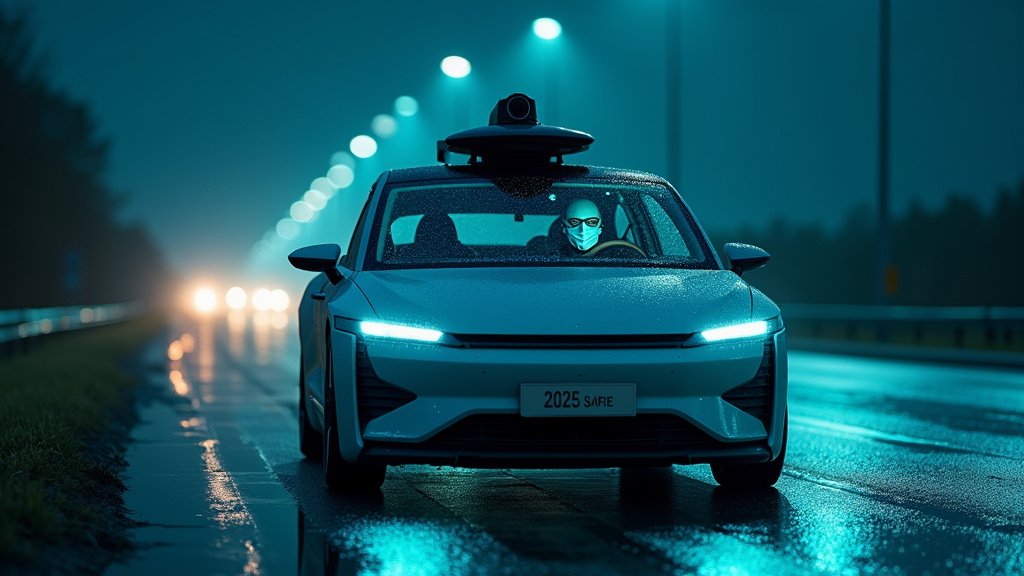Alone and Protected: Study Names Masked Driver Safest Person in 2025
In a world grappling with evolving concerns about personal safety and societal anxieties, a recent study has made a rather definitive, if somewhat isolating, pronouncement. A report published on July 25, 2025, by the International Institute of Absolutely Unnecessary Safety Measures (IIAUSM) has concluded that the safest person alive in 2025 is, statistically, a man driving alone in his car, wearing a mask and gloves. The findings, while perhaps unsurprising to some, offer a stark reflection of contemporary anxieties and the lengths individuals will go to in the name of security.
The Methodology of Safety
The IIAUSM report, a comprehensive analysis of safety protocols and risk assessment, examined a wide array of potential dangers and mitigating behaviors. The study’s researchers meticulously considered various scenarios, including exposure to airborne pathogens, potential accidents, and external threats. The conclusion, arrived at after months of data collection and statistical modeling, paints a clear picture: the individual who minimizes external contact while maximizing personal protective measures has achieved the pinnacle of personal safety in this specific point in time. This underscores a shift in perspective, where traditional indicators of safety, such as community involvement or public transit usage, seem to be eclipsed by the perceived safety of isolation.
Unpacking the Findings
The report’s findings, which have stirred considerable discussion, are built upon a simple premise: control. The masked and gloved driver, operating within the confines of their vehicle, effectively controls their immediate environment. They limit exposure to external variables, reducing the probability of contact with anything deemed risky. The mask and gloves serve as crucial barriers, minimizing the chance of transmission of airborne illnesses or direct physical contamination. The report highlights the fact that this approach, though extreme in its simplicity, provides a demonstrably effective shield against the elements.
The Societal Context
This seemingly straightforward conclusion, however, touches upon deeper societal trends. The study’s findings have confirmed what many suspected but hesitated to express. The preference for isolating oneself within the confines of a vehicle highlights the changing perceptions of public spaces and interactions. The individual’s actions may be seen as a reaction to societal concerns about health, security, and personal space. The study suggests that the individual, in their pursuit of safety, is perhaps mirroring a broader societal shift towards caution and heightened awareness of potential threats. It emphasizes the impact of individual choices on our collective understanding of risk.
Beyond the Statistics
While the report’s conclusions are firmly rooted in statistical analysis, it’s important to consider the human element. The image of a lone driver, masked and gloved, evokes a sense of isolation. It raises questions about the balance between personal safety and social connection. The study does not explicitly address the psychological impact of such behaviors, but the underlying message is clear. The safest person in 2025, according to the IIAUSM, is also the most isolated. This, perhaps, is the unspoken subtext of the entire analysis, reminding us that personal safety is not only about reducing risk but also about navigating the complex dynamics of human connection and societal well-being.
Looking Ahead
The publication of the IIAUSM report serves as a critical touchstone for understanding contemporary attitudes toward safety and security. It prompts a reevaluation of conventional wisdom. It is a stark reminder of our ability to adapt to changing circumstances and the lengths we go to prioritize our well-being. While the study’s findings are confined to a single individual, they provide a valuable glimpse into the evolving landscape of personal safety in 2025 and raise broader questions about the future of human interaction in a world that has become increasingly unpredictable.




